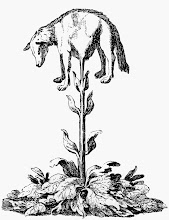
Posted on Giraffecycle Forum:
Last week I noticed my cat was limping and had air bubbles under his skin on his shoulder. The vet found bite marks and thought it was caused by a cat fight, which made sense to me.
Today my next door neighbors beagle was attacked. She was found in a puddle of blood, not moving. They took her to the vet and they discovered hundreds of punctures (bites) all over her body, and the same air bubbles under her skin.
My dad saw a massive mink a few days ago and we think this is what is attacking pets. If it is a mink, they are vicious and will attack animals larger than them even if they are not provoked, and this mink is big. If you live in the area of the French Village Road, please keep your pets in or watch them when they go out.
The 2006 Census of Agriculture by Statistics Canada listed the Mink population in New Brunswick at 46,825, a 74.8 per cent increase from 2001, likely the result of reduced trapping due to the prevalence of fur farms. The American Mink, Neovison Vison, are considered "truly domesticated animals" by the United States Fur Commission solely on the basis of their long-standing place in fur farms. Minks are nevertheless agressive and high-energy animals, and have been bred for size and not placidity.
The Sea Mink, Neovison macradon, was hunted to extinction in the nineteenth century. It lived among the coastal rocks of the North Atlantic, from Massachusetts to Nova Scotia, and possibly lower Newfoundland. The last known specimen was killed on Campobello Island, New Brunswick in 1894. It was preferred by trappers for its pelts, Auburn and naturally larger than its sister species. Eliminated before scientific analysis, subsequent speculation suggests it was nocturnal and solitary. Evidence of the Sea Mink found on the Maine Gulf Coast dates back 5100 years.
.jpg)





No comments:
Post a Comment